Latest news about Bitcoin and all cryptocurrencies. Your daily crypto news habit.
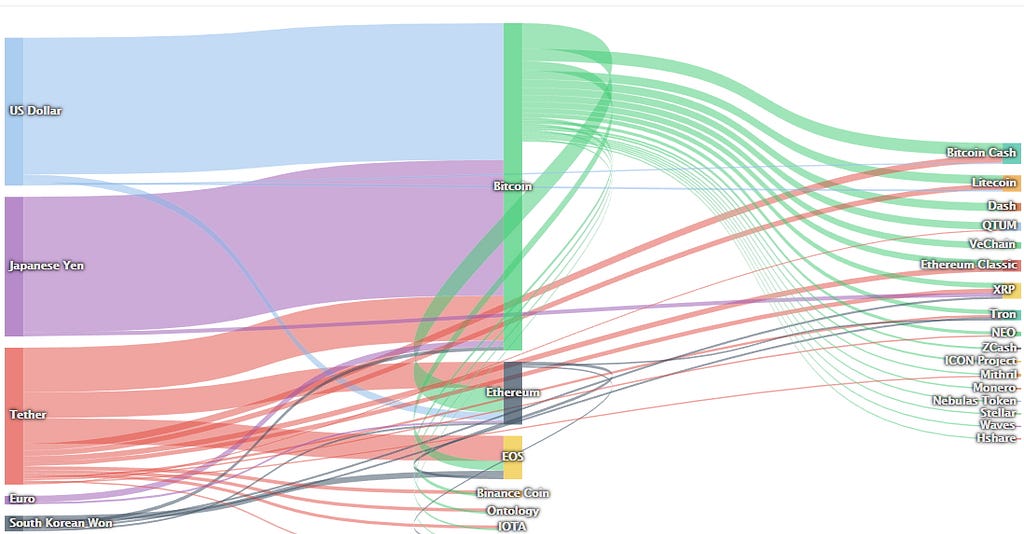 Money flow in the past 24 hours from Coinlib.io
Money flow in the past 24 hours from Coinlib.io
Cryptoasset valuation is a fairly new and iterating practice. Investors often have strong and varying opinions on how to value projects in the emerging asset class. The assets are constantly under experimentation and development, making a fixed model methodology challenging. Traditional market indicators such as market capitalization and supply are often flawed or manipulated. The fundamental side provides even less clarity as debates ensue over issues including scaling, decentralization, PoW and PoS, governance structures, privacy, and security.
There is no consensus on how to properly evaluate and value a cryptoasset.
However, there is one statement that can be agreed upon: evaluating cryptoassets requires a deeper look under the hood. The obvious price, rank, market capitalization, and trading volume metrics do not paint a full or accurate picture. Most cryptoassets are developed on public blockchains with transparent network activity. This results in a wealth of information available to collect, dissect, and process. The data can be examined to gather valuable information such as network size, health, and security.
Metrics such as on-chain transaction volume, average fees on the network, hash rates, active addresses, inflation, block size, and block difficulty provide an insight on what is occurring on the blockchain. Furthermore, block explorers provide even more essential data from top token holders, transfer activity, pending transactions, and exchange list and volume. This is an overwhelming amount of information to find, nonetheless consume, considering there are over 1500+ cryptoassets currently deployed (3 of which are probably legitimate).
Fortunately, there are some spectacular, free, resources available to students, engineers, traders, and analysts. Below are some bookmark-worthy data and visualization resources for those looking to dig deeper into a cryptoasset.
The resources are grouped into following categories: market data, blockchain data, ICO and token data, and some fun data visualizations.
Market Data
1. OnchainFX (www.onchainfx.com): The favorite among the cryptoasset ranking resources. Within 6 months of launch, OnchainFX has partnered with Bloomberg and Galaxy Digital Capital Management to provide their data on a new cryptoasset index. Unlike other cryptoasset ranking websites, OnchainFX offers an extensive amount of data points that can be added to the default view. Furthermore, coins are categorized and tagged by market cap size, sector, indexes, daily movers, potential scams and more. Visitors also have the ability to “publish view” and share it via a simple URL.
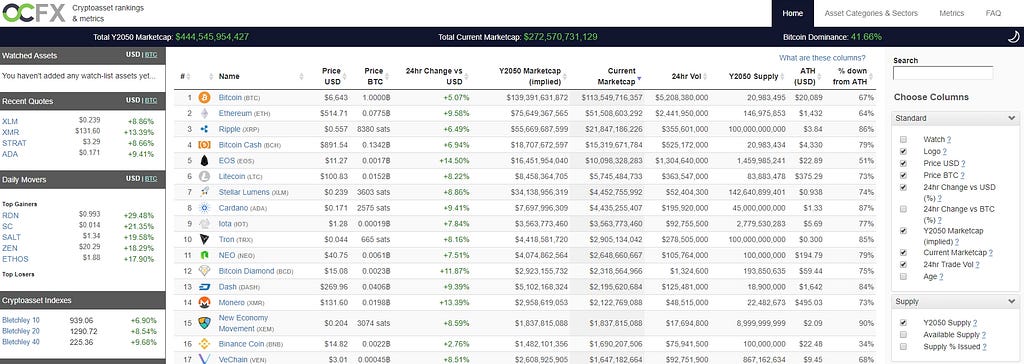 A customized view including the basic data + Y2050 marketcap, Y2050 supply, ATH, % down from ATH from OnchainFX
A customized view including the basic data + Y2050 marketcap, Y2050 supply, ATH, % down from ATH from OnchainFX
2. Bitcoinity (data.bitcoinity.org): Bitcoinity provides exchange and market data displayed in chart view with the ability to export to CSV/XLSX. Data points include Bitcoin trading volume, exchange rankings, exchange trades per minute, bid/ask spreads, and some blockchain data including hash rate, mining difficulty , and number of transactions. Bitcoinity doesn’t offer an enormous amount of data points but data visualization is effective and elegant.
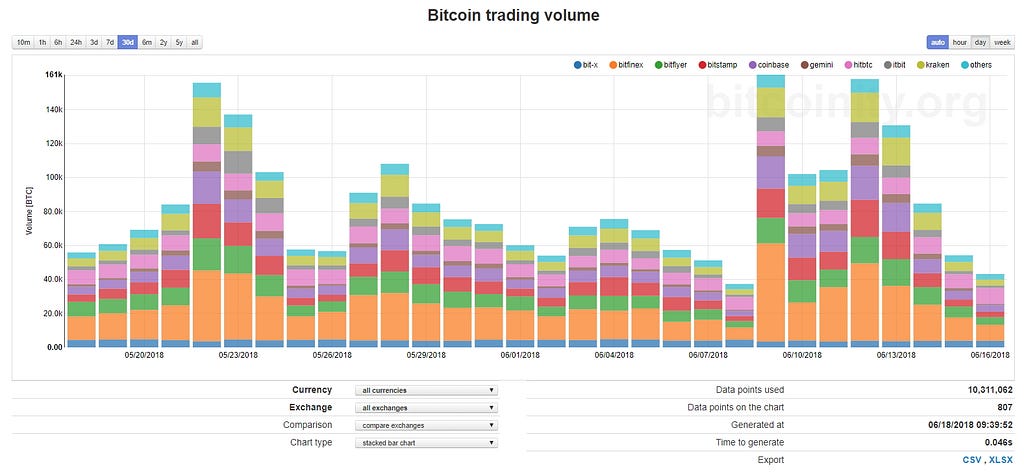 Bitcoin trading volume by exchange on Bitcoinity
Bitcoin trading volume by exchange on Bitcoinity
3. CoinMarketCap (www.coinmarketcap.com): For a high level view and ranking of cryptoassets. CoinMarketCap is the default choice among retail investors looking for a quick glance at high level cryptoasset ranking and market data. It receives so much traffic that it can move markets.
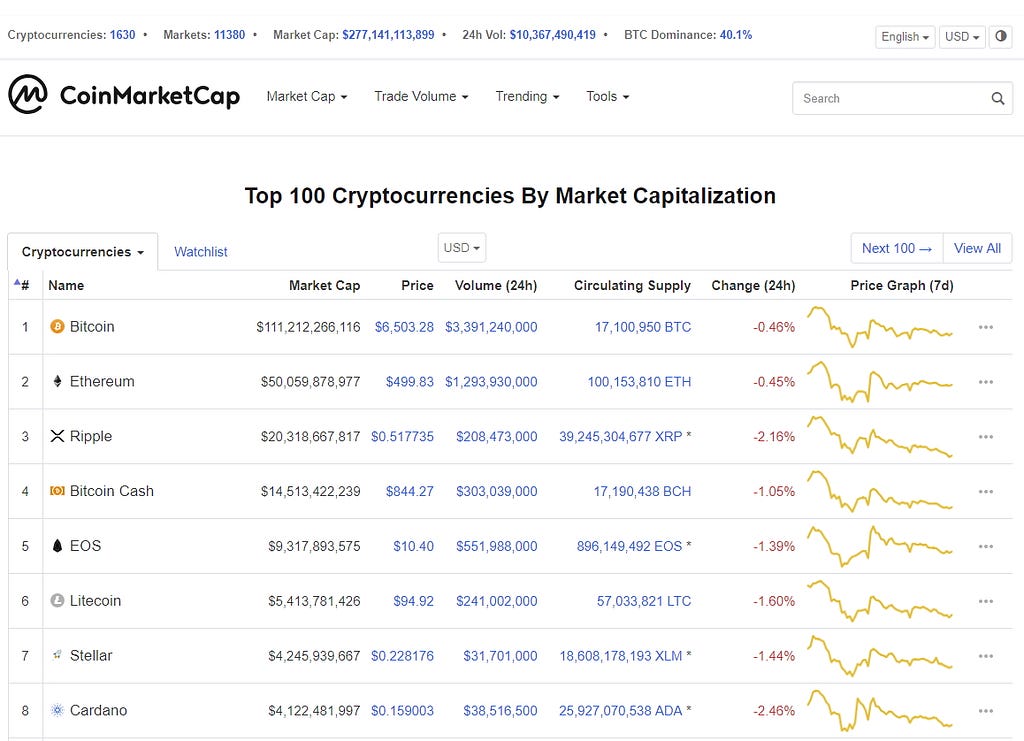 The CoinMarketCap landing page
The CoinMarketCap landing page
4. Coin360 (www.coin360.io): Coin360, previously CryptoMaps, is a simple price activity heat map. The block sizes can be set to market capitalization or volume and the performance periods can be customized to the visitors selection.
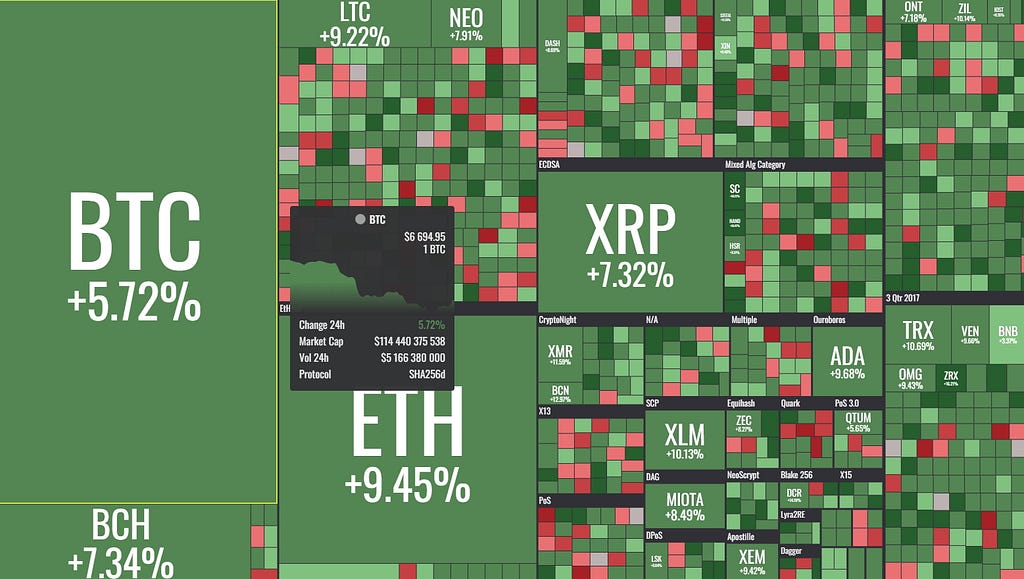 A display of all tokens and coins, block size by marketcap.
A display of all tokens and coins, block size by marketcap.
5. Sifr Data (www.sifrdata.com): Visualizing cryptoasset correlation data can be useful to observe how cryptoassets are moving in relation to one another. Sifr Data provides charts, visuals, and simulations on some of the larger assets.
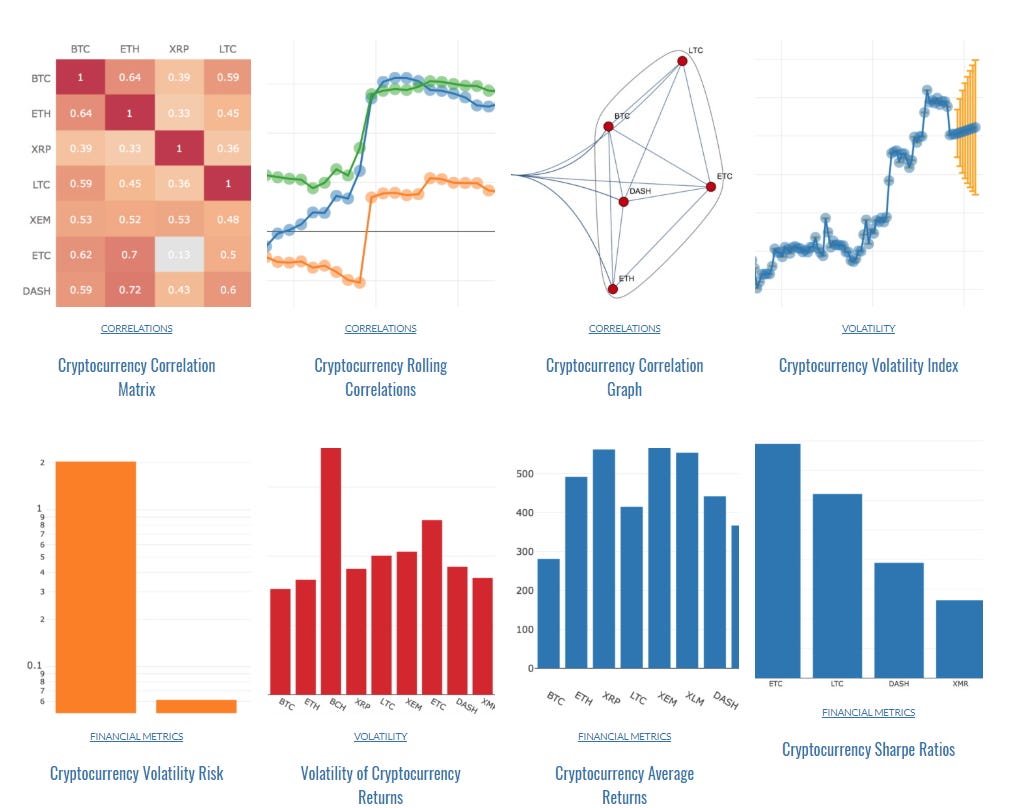 Track cryptoasset price correlation movements on Sifr Data
Track cryptoasset price correlation movements on Sifr Data
Additional resources: Coingecko, Nomics
Blockchain Data
1. Coin Metrics (www.coinmetrics.io): The team at coin metrics have developed a phenomenal resource for data enthusiasts. Data points include price, market cap, exchange volume, NVT, volatility on returns, and ROI. The on-chain data points are even more extensive with transaction count, on-chain transaction volume, average fees, active addresses, difficulty, and more. Visitors have the option of downloading the entire data set or to view it on the customizable charting tool. Traders and analysts can use the advanced charting tool to track standard or custom indicators. Coin metrics is one of my go-to resources to observe cryptoasset network and market activity. The real fun begins when these cryptoassets begin to decouple from one another.
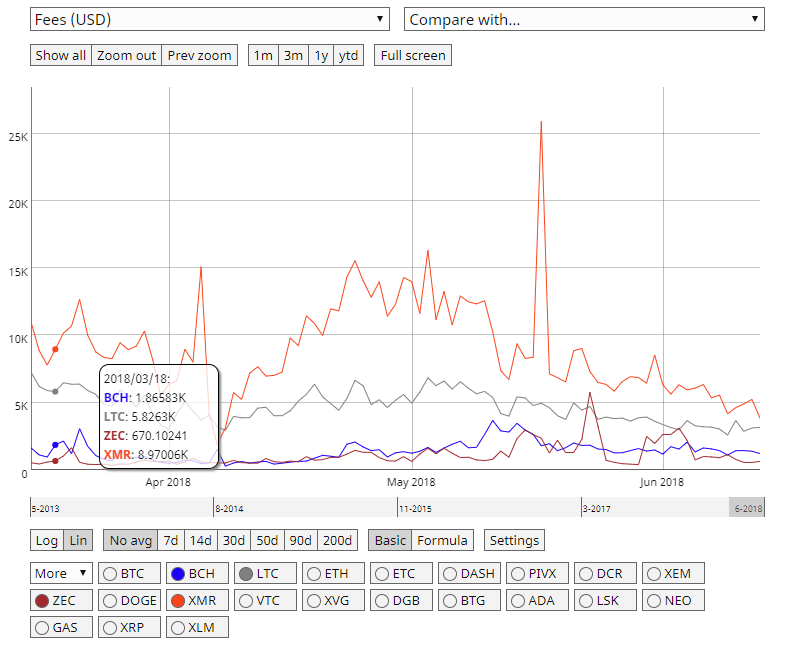 Charting the on-chain fees (USD) for BCH, LTC, ZEC, XMR on Coin Metrics
Charting the on-chain fees (USD) for BCH, LTC, ZEC, XMR on Coin Metrics
2. Bitcoin Visuals (www.bitcoinvisuals.com): Similar to Coin Metrics, a clean website with charts and data. The charts include Bitcoin height, hash rate, inputs/day, outputs/day, mining difficulty, and more. Lightning network data is also available, from nodes, channels, capacity, and clustering.
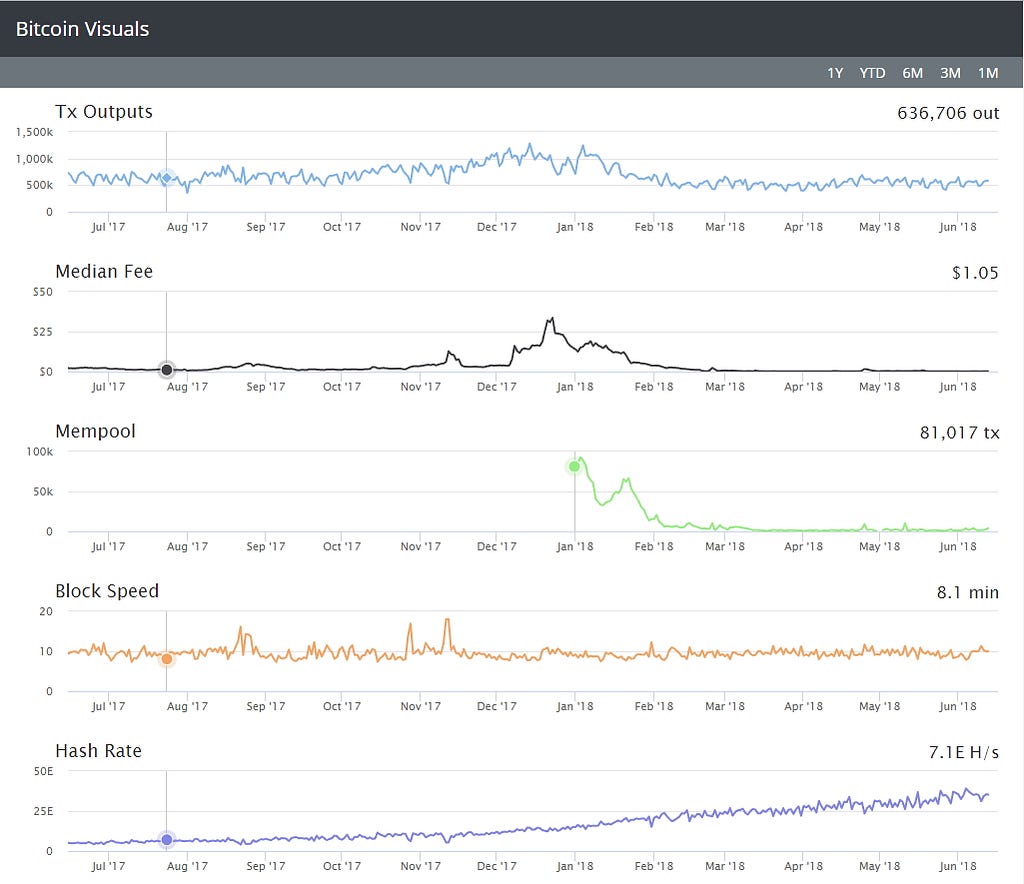 The dashboard view displays tx outputs, median fee, mempool, blockspeed, hash rate, and more on Bitcoin Visuals
The dashboard view displays tx outputs, median fee, mempool, blockspeed, hash rate, and more on Bitcoin Visuals
3. Bloxy (www.bloxy.info): Bloxy is a great resource for token data on the Ethereum blockchain. Data can be sorted by ERC-20, ERC-721, ERC-223, ERC-827 tokens. The number of transfers, unique sender/receivers, and volume data points provide visibility on network size on specific tokens on the Ethereum blockchain. The token dynamics page provides visibility on top tokens, top tokens by number of transfers, statistics by different token types, and more. The ICO analysis and trends and analytical reports sections provide clean, data charts and visualizations.
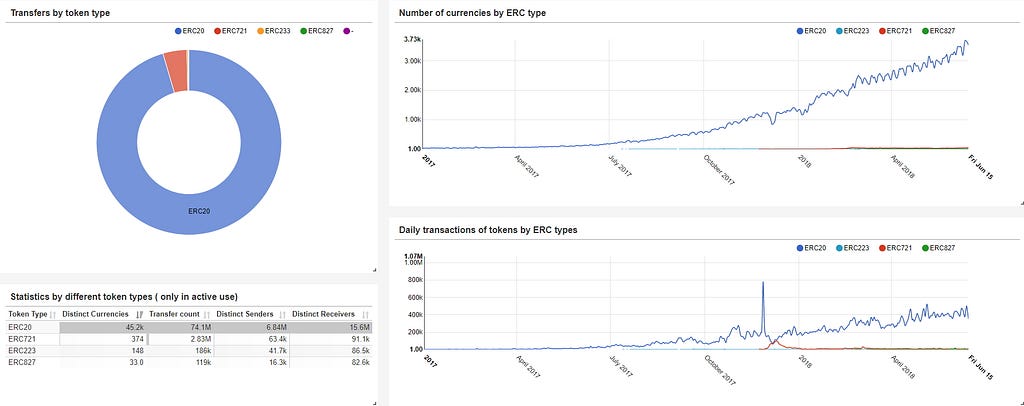 Ethereum token data from Bloxy
Ethereum token data from Bloxy
4. Blockchair (www.blockchair.com): Blockchair aims to be a blockchain powered search engine for Bitcoin, Bitcoin Cash, and Ethereum. Example search queries include “The biggest BTC block”, “The biggest BCH blocks”, and “$1 million BCH transactions.” Blockchair is a unique and fun way to play with blockchain data.
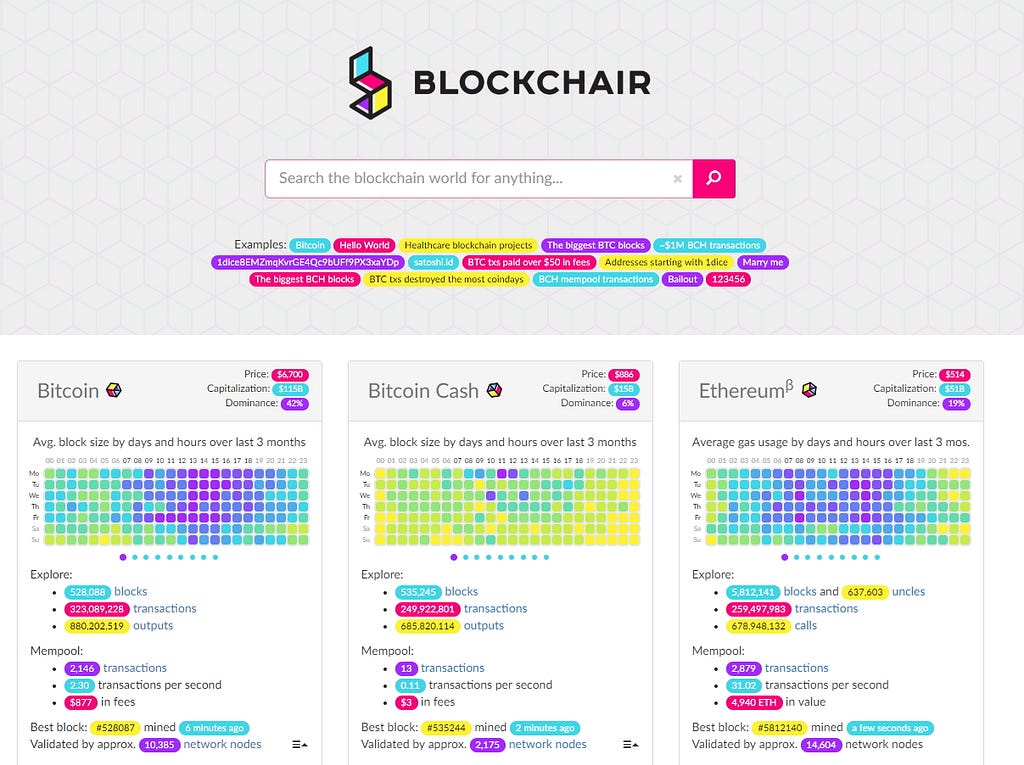 The blockchair search engine powered by blockchain data
The blockchair search engine powered by blockchain data
5. Bitinfocharts (www.bitinfocharts.com): Bitinfocharts provides data and charts for a number of coins and tokens including Bitcoin, Ethereum, Bitcoin Cash, Litecoin, Zcash, and Monero. The comparison charting tool can be used to compare blockchain hash rates, transactions, fees, active addresses, and more. Market and correlations data is also available.
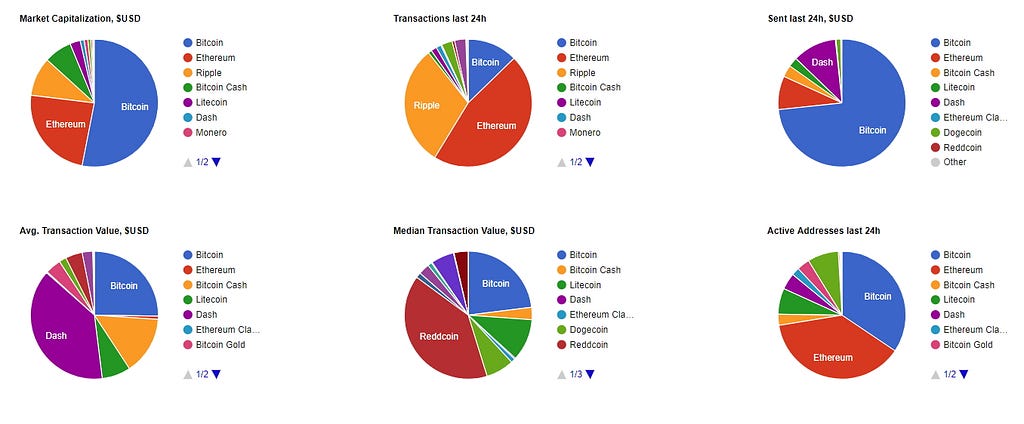 Market cap, transaction, active addresses and other data pie charts from Bitinfocharts
Market cap, transaction, active addresses and other data pie charts from Bitinfocharts
6. Etherscan (www.etherscan.io): Etherscan is excellent block explorer and data hub for all things Ethereum. The token tracker can be used to view all ERC 20 tokens sorted by volume and market cap. Token transfers, holders, exchanges, and contracts can all be viewed from this tracker. The charts and statistics section has an assortment of charted data from address growth, supply growth, hashrate growth, and pending transaction pool. Individual decentralized relayer data is also available in the DEX tracker.
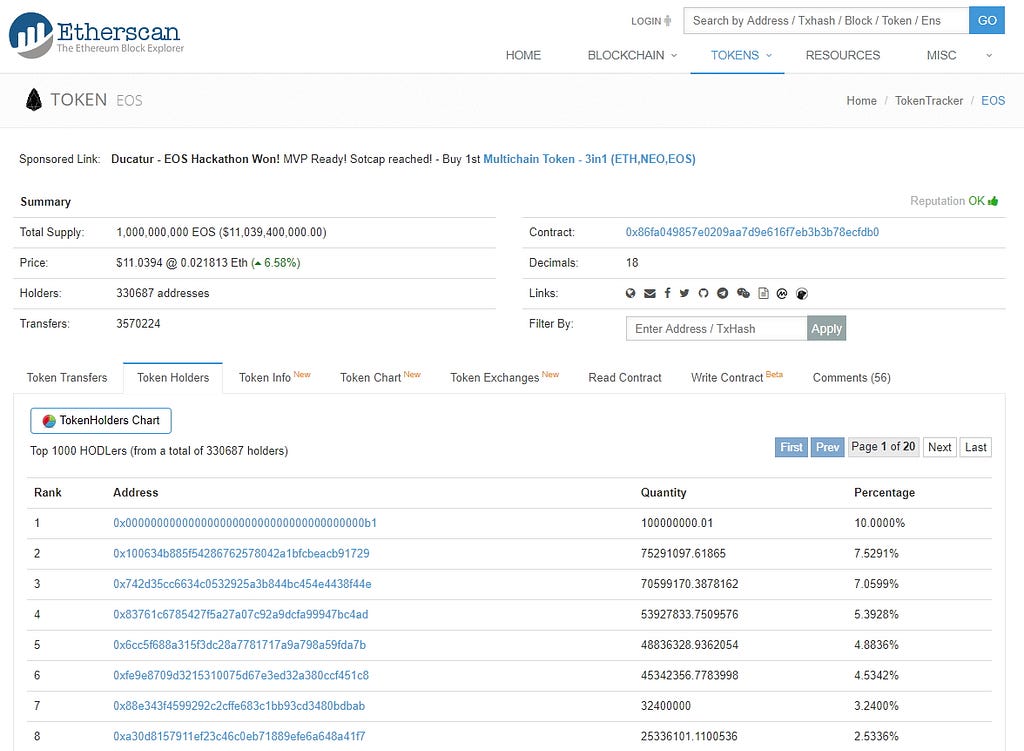 EOS token holder information displays the top token holders in the network. From Etherscan.
EOS token holder information displays the top token holders in the network. From Etherscan.
7. Blockchain.info (www.blockchain.info): Blockchain.info is a Bitcoin block explorer which provides block, mining, network and wallet activity statistics. The statistics dashboard provides excellent summary of the Bitcoin blockchain in table and chart format. The block explorer can be used to view wallet activity and movement.
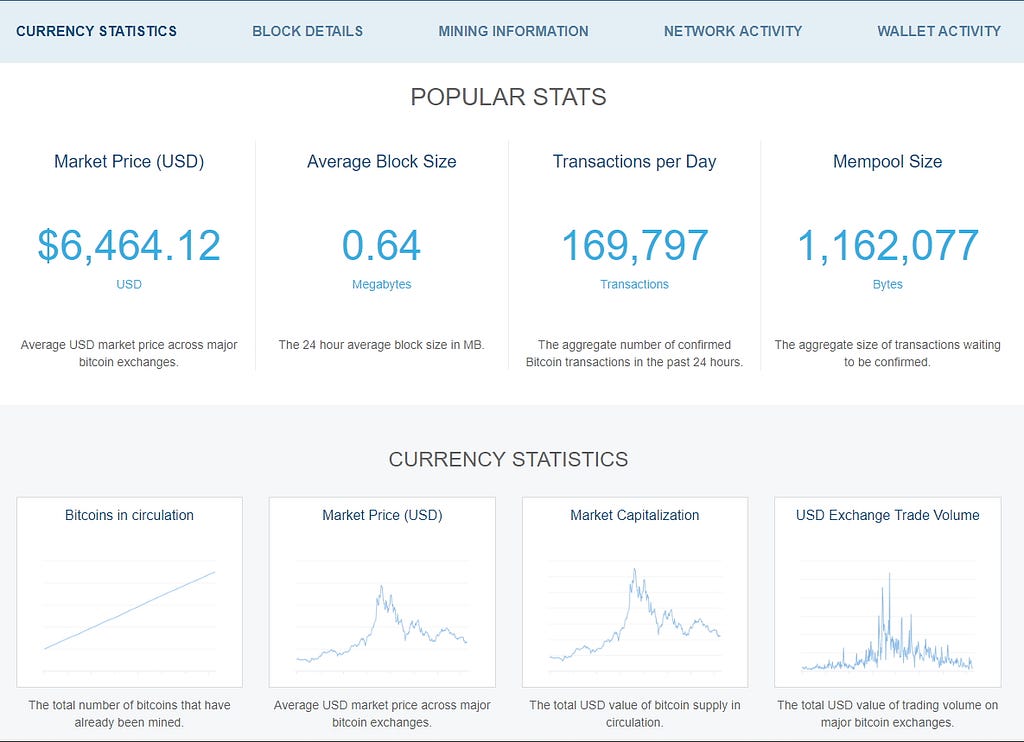 The statistics page on Blockchain.info includes average block size, transactions per day, mempool size, and more.
The statistics page on Blockchain.info includes average block size, transactions per day, mempool size, and more.
7. Johoe’s Bitcoin Mempool Statistics (www.jochen-hoenicke.de): Bitcoin, Bitcoin Cash, and Litecoin mempool statistics and charts. Charts include unconfirmed transaction count, pending transaction fees, and mempool size.
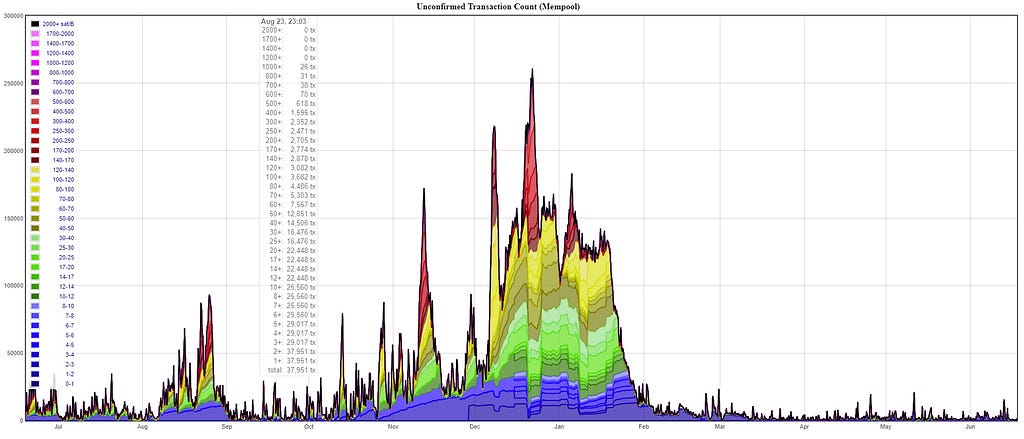 Unconfirmed transaction count from Johoe’s Bitcoin Mempool
Unconfirmed transaction count from Johoe’s Bitcoin Mempool
Additional resources: DappRadar, Blockpath, CryptoID Blockchain Explorers, Blockseer, 0x tracker, Transactionfee.info
ICO and Token Data
1. Coindesk ICO Tracker (www.coindesk.com/ico-tracker): Coindesk provides an ICO tracker with data including all time cumulative ICO funding, monthly new ICO funding, size vs number of ICO’s, and annual funding totals.
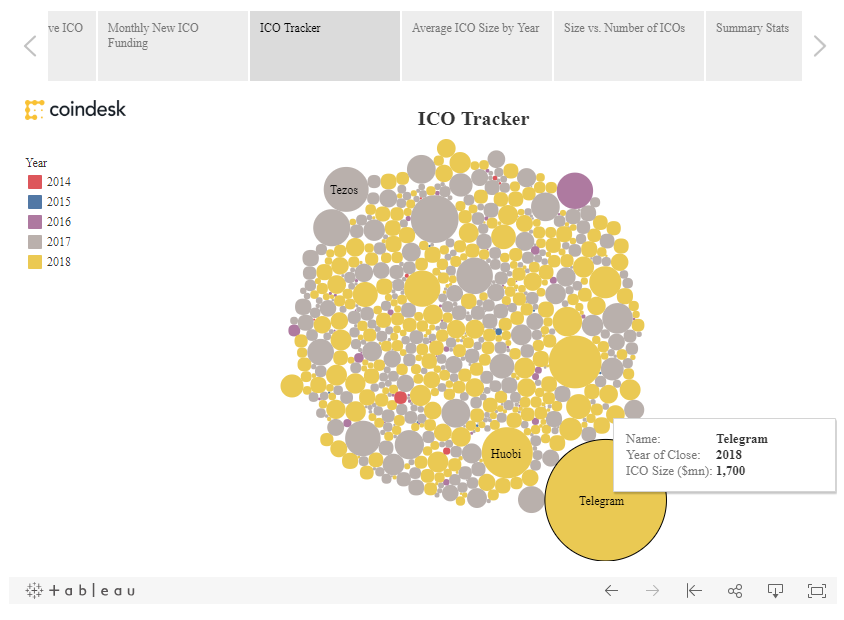 The Coindesk ICO tracker. A tool to visualize annual and monthly ICO data.
The Coindesk ICO tracker. A tool to visualize annual and monthly ICO data.
2. TokenData (www.tokendata.io): Token data can be used as a resource to quickly look up a token, its ICO status, USD raised, sale price, current price, and return.
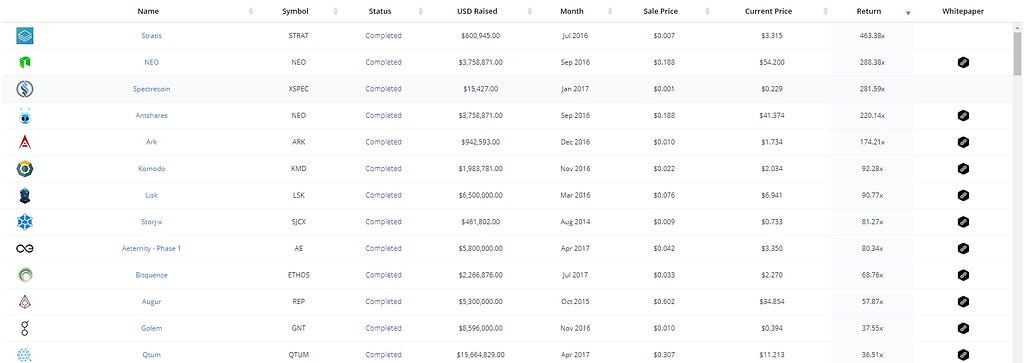 ICO’s sorted by highest return on Token Data
ICO’s sorted by highest return on Token Data
3. Messari (www.messari.io): TwoBitIdiot and the team at Messari are working on a project aimed at delivering transparency in the token world. Messari is a work in progress but I’m a fan of what I see so far. Token profiles in the Messari open source library provide clean and concise summaries.
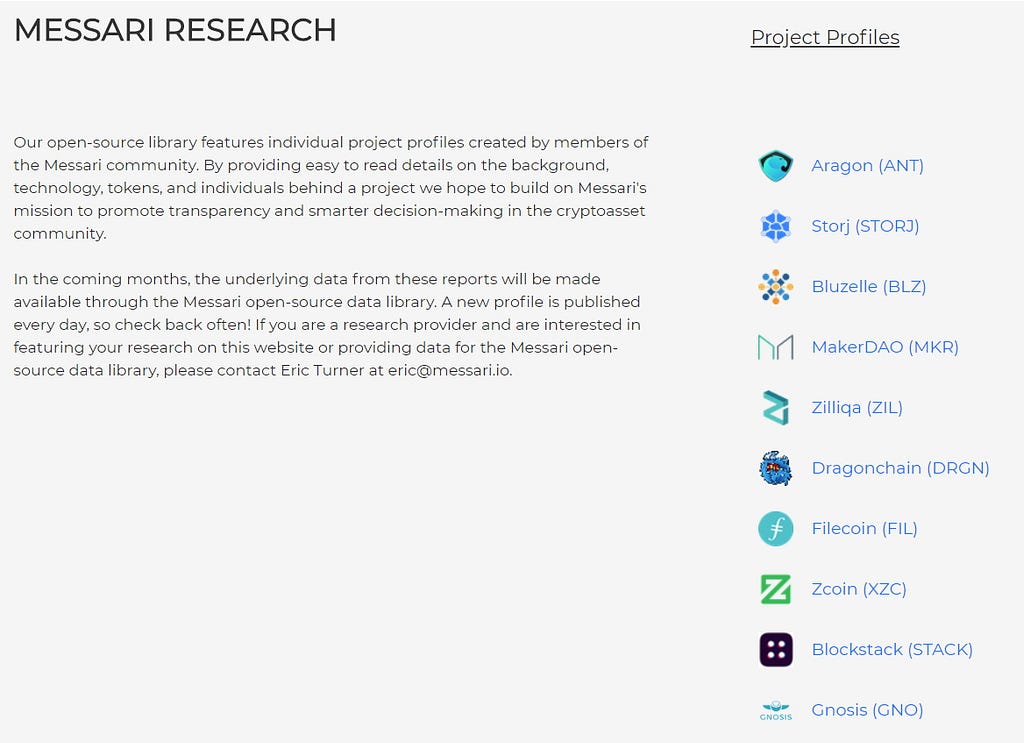 The Messari open source library
The Messari open source library
Additional resources: Elementus token sale history
Data Visualizations
1. TX Highway Cash (www.txhighway.cash): A clever blockchain visualization with live Bitcoin and Bitcoin cash transactions in an animated highway. Vehicles size and speed correlate to block size and transaction speed. Lightning network transactions are also included.
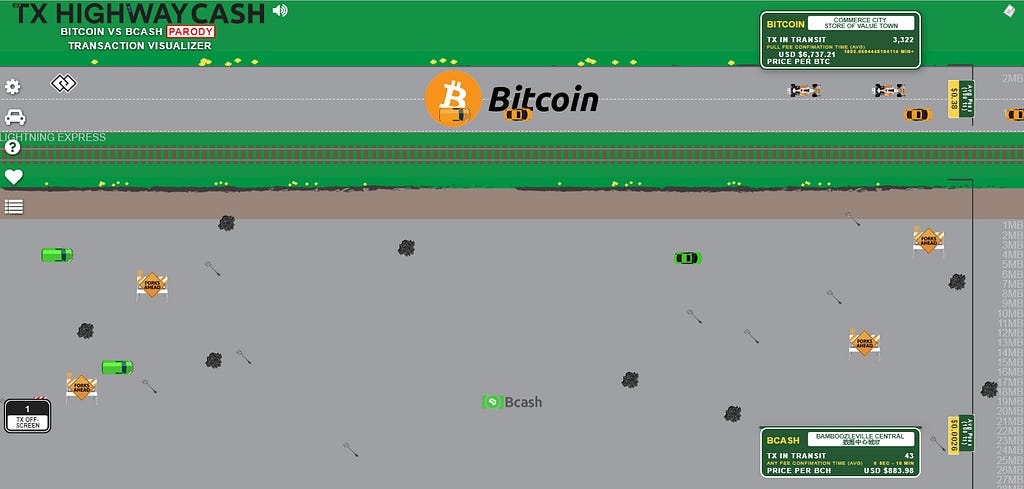 A live highway visualization displaying Bitcoin and Bitcoin cash transactions from Tx Highway.
A live highway visualization displaying Bitcoin and Bitcoin cash transactions from Tx Highway.
2. Coinlib (www.coinlib.io): Coinlib provides market, exchange, and some blockchain data in clean table and graphical visuals. The global charts section provides a 24 hour fiat and crypto flow visualizations.
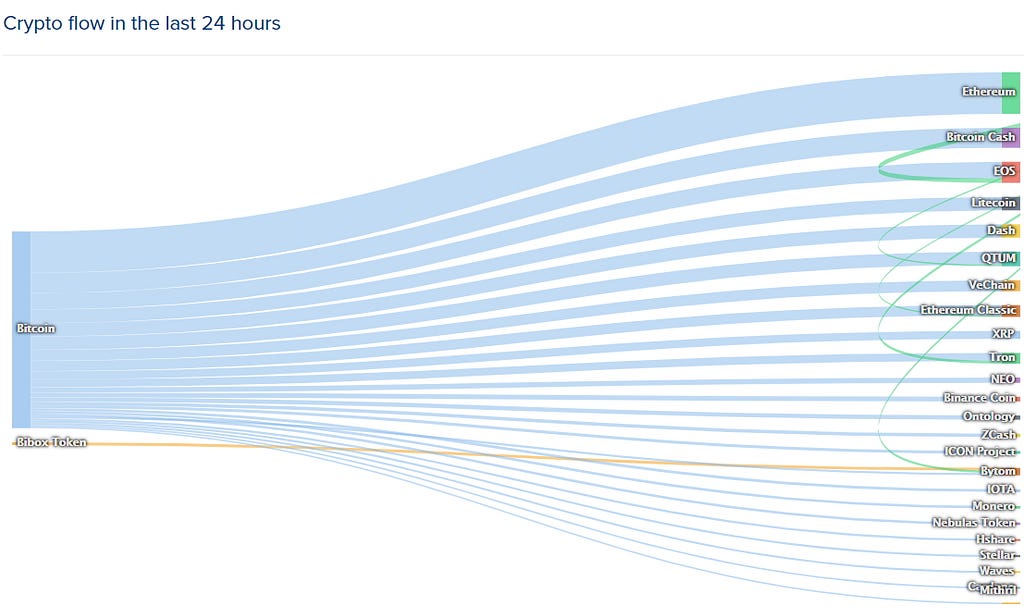 A visualization of crypto money flow in the last 24 hours from Coinlib
A visualization of crypto money flow in the last 24 hours from Coinlib
3. Satoshis Place (www.satoshis.place): Satoshi’s Place is a collaborative canvas powered by the lightning network. 1 million pixels are available to purchase to paint at a price of 1 satoshi per pixel. The micro payments are routed through the lightning network.
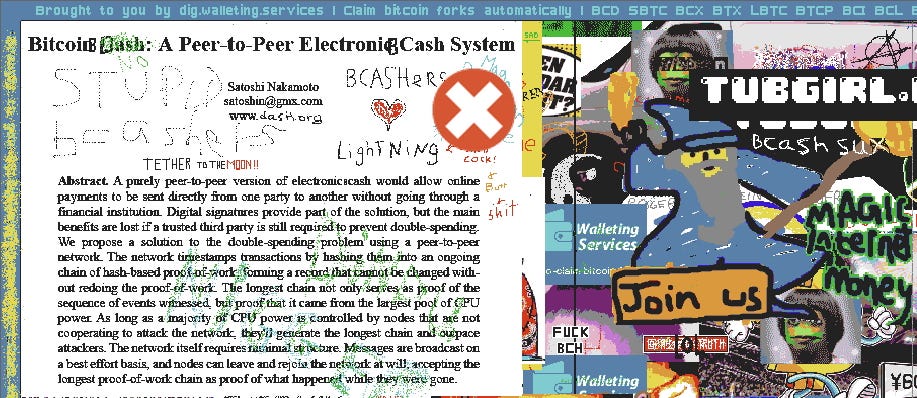 2.3 million pixels were purchased and drawn today at Satoshis Place
2.3 million pixels were purchased and drawn today at Satoshis Place
4. Bitnodes (bitnodes.earn.com): A live map of reachable Bitcoin nodes is available on Bitnodes. Be sure to visit the 3D network map.
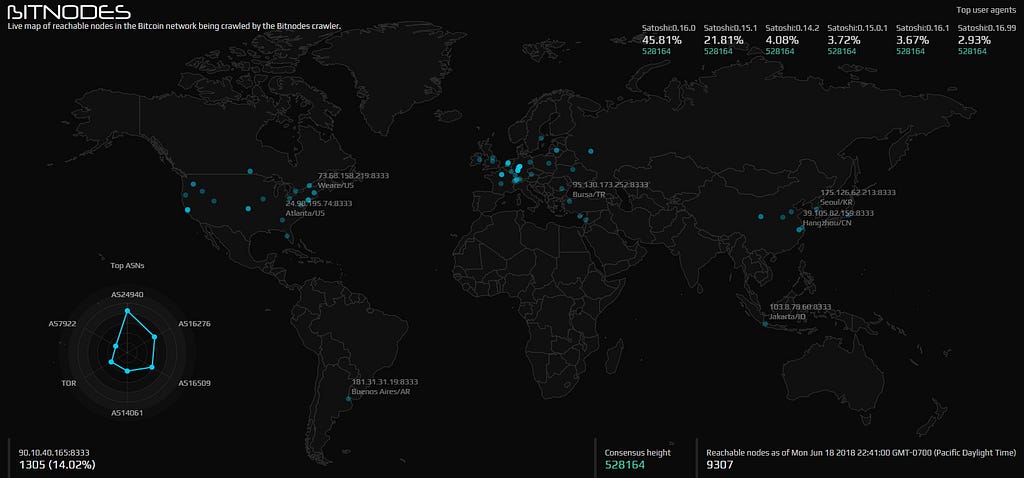 A live map of reachable Bitcoin nodes from Bitnodes
A live map of reachable Bitcoin nodes from Bitnodes
5. Bitforce5 (www.bitforce5.com): Bitforce5 has a live, animated visualization up to 300 linked transactions and addresses. The data is sourced from Blockchain.info and can be viewed by double clicking the icons.
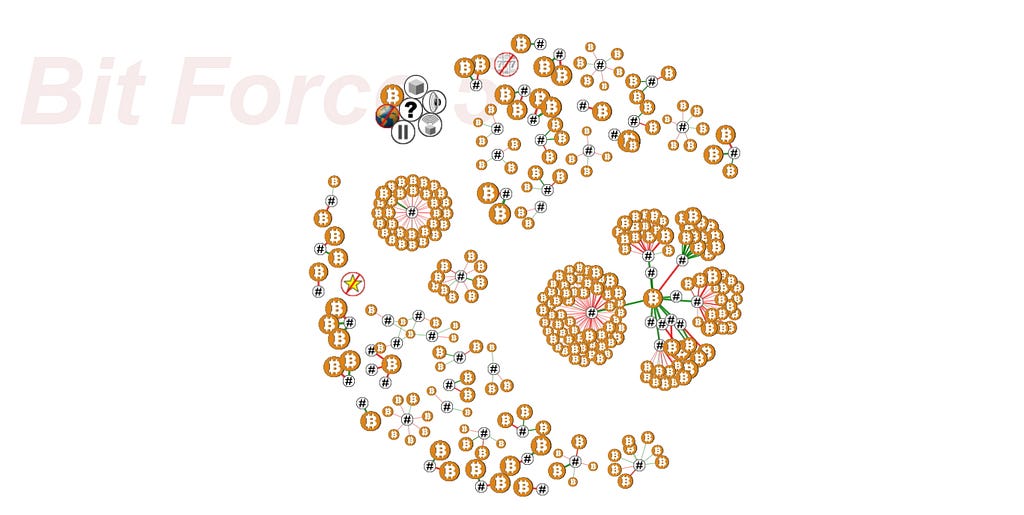 Live Bitcoin activity from Bitforce5
Live Bitcoin activity from Bitforce5
Additional visualizations: Bitcoin City, Real time Bitcoin Globe, Poketoshi
Did I miss something? Ping me on twitter @blockchainjoy
Digging deeper into cryptoassets: data and visualization resources was originally published in Hacker Noon on Medium, where people are continuing the conversation by highlighting and responding to this story.
Disclaimer
The views and opinions expressed in this article are solely those of the authors and do not reflect the views of Bitcoin Insider. Every investment and trading move involves risk - this is especially true for cryptocurrencies given their volatility. We strongly advise our readers to conduct their own research when making a decision.
